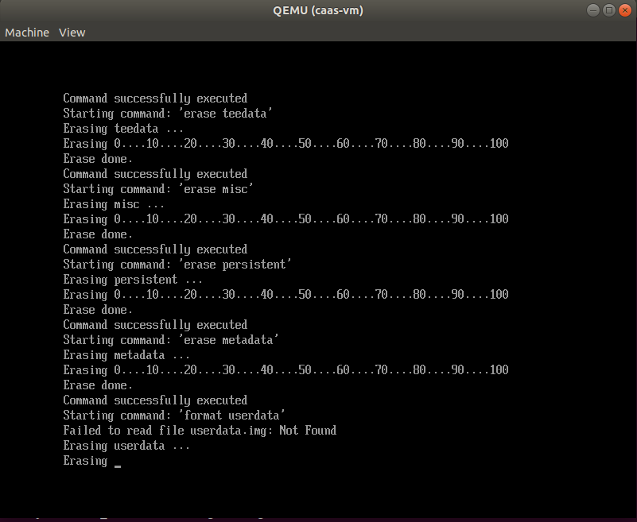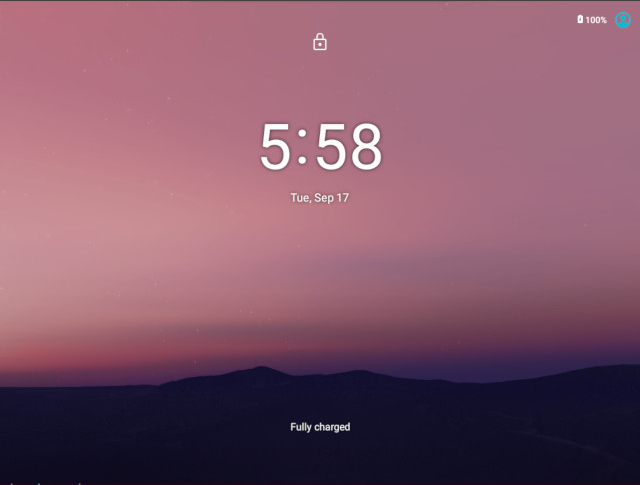Run Celadon in a virtual machine
This page explains what you’ll need to run Celadon in a virtual machine.
Depending on your applications, you can run CiV using Intel® GVT-g technology, or allowing for GPU passthrough to a single Android* guest VM through Intel® Virtualization Technology (Intel® VT) for Directed I/O (Intel® VT-d) technology, or SR-IOV (single root input/output virtualization) Intel VT to have a balance of GPU sharing (for multiple VMs) and performance as good as bare metal, VirtIO GPU, or pure software rendering.
Prerequisites
An Intel® NUC with an eighth generation (12th generation for SR-IOV) or newer Intel® Core™ Processor.
Ubuntu* 20.04 (Focal Fossa) preinstalled that runs Linux* kernel version 5.0.0 (5.10.100 for SR-IOV) or above.
Note
CiV releases have been validated on Intel NUC model NUC7i5DNHE. Releases after April 17th 2020 are validated on Intel NUC model NUC10i7FNK and NUC10i7FNH to take performance advantages of 10th Generation Intel Core Processors. For SR-IOV, they are validated on Intel NUC model NUC12WSH with 12th generation Intel Core Processors.
Intel GVT-d overview
Intel® Graphics Virtualization Technology (Intel® GVT) covers three distinct flavors of graphics virtualization approaches. Among these approaches, Intel GVT-d is based on Intel VT-d technology, it also includes additional graphics related configuration options when compared to standard NIC pass-through devices. Intel GVT-d allows direct assignment of an entire GPU’s capacity to a single user, passing the native driver capabilities through the hypervisor without limitations.
Refer to this article for an introduction to Intel Graphics Virtualization Technology.
Intel GPU SR-IOV overview
An Intel GPU can isolate GPU PCIe devices to improve performance to a level that is similar to bare-metal levels. Intel GPU SR-IOV is based on SR-IOV technology, SR-IOV consists of two basic units: PF (Physical Function), which supports SR-IOV PCIe extended capability and manages entire physical devices; and VF (Virtual Function), a “lightweight” PCIe function that is a passthrough device for VMs.
Refer to this article and this video for an introduction to SR-IOV Technology.
Prepare the host environment
Set up QEMU and Intel GVT/SR-IOV technology
The host device that launches the virtual machine requires Ubuntu 20.04.
To simplify the preparation work, a helper script setup_host.sh is
provided. The script re-builds the OVMF.fd firmware and
QEMU emulator from source depending on the target graphics virtualization
technology, and installs the required software on the installed Ubuntu
system for running Celadon in a VM with QEMU.
Download and extract the release package(caas-releasefiles-<$buildvariant>.tar.gz) from: celadon-binary Meanwhile, you can also refer to Build Celadon boot image section to build release packages.
$ sudo mkdir -p /opt/civ-1 && sudo chown -R $(id -u):$(id -g) /opt/civ-1
$ tar zxvf caas-releasefiles-<$buildvariant>.tar.gz
$ chmod +x scripts/setup_host.sh
Launch the script with no argument to set up the environment for running CiV using Intel GVT/SR-IOV technology:
$ sudo -E ./scripts/setup_host.sh
During the installation, you will be prompted by some questions to confirm the changes to the packages, it’s safe to respond y to all of them.
Use Celadon kernel
The Linux kernel is extremely important on every Android device. Google*
recommends using AOSP common kernels on Android devices to include
features and implementations required by Android.
In addition to the AOSP common kernel, Celadon also integrates several
staging patches
to take advantages of high performance new Intel processors,
so it’s strongly recommended to run the Celadon kernel as the host OS,
especially running CiV on NUC10i7FNK or NUC10i7FNH (NUC12WSH for SR-IOV) Intel NUC devices.
To that end, a helper script build.sh is designed to facilitate
building and deploying the Celadon kernel on an Ubuntu host.
Refer to the
README
for detailed GVT kernel build instructions. Refer to
this README
for detailed SR-IOV kernel build instructions.
Build Celadon images running in VM
Refer to the Build Celadon boot image section in the Getting Started Guide and
specify caas as the lunch target to build the CiV images. The
following CiV image types are generated at the end of the build:
caas.img
The GPT disk image for direct booting. Skip the next section to boot the CiV image with QEMU.
caas-flashfiles-eng.<user>.zip
The compressed flashfiles package contains the Celadon partition images for running in a VM. Proceed with the following section to install these images to a virtual disk image in qcow2 format.
caas-flashfile-eng.<user>.iso.zip
cass-flashfile-eng.<user>.iso.zip is an ISO format bootable image that can be
burned to a bootable CD/DVD or cloned to USB pendrive. It is used to install Caas images
in VM and BM (Bare Metal). It is independent on a UEFI Shell.
cass-flashfiles-eng.<user>.zip image flashing dependents on BIOS UEFI shell. For
Celadon in VM solution, it always works because VMM (like QEMU) can provide a UEFI Shell.
But for Celadon in a bare mental solution, it doesn’t work because some devices don’t
have a built-in UEFI Shell. So we need provide a new solution to flash Caas images to such devices.
caas-releasefiles-<$buildvariant>.tar.gz
caas-releasefile-<$buildvariant>.iso.tar.gz
The release tar ball contains all required flashfiles/scrips for running Celadon in VM.
Create a CiV virtual disk
Note
Skip this section if you plan to boot the device directly with the
GPT disk image caas.img.
Follow the instructions below to create and set up CiV partitions on a qcow2 formatted virtual disk.
Run the helper script
start_flash_usb.sh.$ cd /opt/civ-1 $ sudo ./scripts/start_flash_usb.sh caas-flashfiles-eng.<user>.zip
If you are using an iso image, run the following commands:
$ cd /opt/civ-1 $ sudo ./scripts/start_flash_usb.sh caas-flashfiles-eng.<user>.iso.zip
By running the
start_flash_usb.shscript, a QEMU window will pop up, it will drop to the built-in UEFI Shell, and start flashing the partitions to the virtual disk image.
The QEMU window will be closed automatically once flashing is complete. Now we get the CiV virtual disk
android.qcow2under the current directory.
Boot to Android UI
There are two ways to start a CiV instance: vm-manager and start_civ.sh. For Android-12 and later releases, please refer to vm-manger. For Android-11 and previous releases, please refer to start_civ.sh. Check Release Notes here: https://docs.01.org/celadon/release-notes.html.
Use vm-manager
The vm-manager tool was developed to facilitate the CiV images booting process. It supports various options:
vm-manager [-c] [-d vm_name] [-b vm_name] [-q vm_name] [-f vm_name] [-u vm_name] [--get-cid vm_name] [-l] [-v] [-h]
-c |
Create a new CiV guest configuration |
-d |
Delete a CiV guest |
-b |
Start a CiV guest |
-q |
Stop a CiV guest |
-f |
Flash a CiV guest |
-u |
Update an existing CiV guest |
--get-cid |
Get cid of a guest |
-l |
List existing CiV guest |
-v |
Show CiV vm-manager version |
--start-server |
Start host server |
--stop-server |
Stop host server |
--daemon |
start server as a daemon |
-h |
Show this help message |
All CiV guest configuration file (INI formated) are stored at
$HOME/.intel/.civ/,
Install vm-manager Download the latest release package from: https://github.com/projectceladon/vm_manager/releases. Install it with this command:
sudo apt-get install ./vm-manager_vx.y.z_$OS_VER.deb
Create a ini file under
$HOME/.intel/.civ/civ-1.inifor GVT-g. Configure it as shown below:[global] name=civ-1 flashfiles=/opt/civ-1/caas-flashfiles-CR0000317.zip # flashfiles=/opt/civ-1/caas-flashfiles-CR0000317.iso.zip #use iso image [emulator] path=/usr/bin/qemu-system-x86_64 [memory] size=4G [vcpu] num=1 [firmware] type=unified path=/opt/civ-1/OVMF.fd [disk] size=30G path=/opt/civ-1/android.qcow2 [graphics] type=GVT-g gvtg_version=i915-GVTg_V5_4 vgpu_uuid=1fc89c23-e8a6-47a9-83be-ec23d6f4bb17 [net] adb_port=5555 fastboot_port=5554 [vtpm] bin_path=/usr/bin/swtpm data_dir=/opt/civ-1/vtpm0 [rpmb] bin_path=/opt/civ-1/scripts/rpmb_dev data_dir=/opt/civ-1/ [aaf] path=/opt/civ-1/scripts/aaf [extra] cmd=-chardev socket,id=charserial0,path=/tmp/civ-console,server=on,wait=off,logfile=/tmp/civ-1_serial.log -serial chardev:charserial0
Create an ini file under
$HOME/.intel/.civ/civ-2.inifor SR-IOV. Configure it as shown below:[global] name=civ-2 flashfiles=/home/adl/sriov/caas-flashfiles-CRe011142-r1.zip [emulator] path=/usr/bin/qemu-system-x86_64 [memory] size=4G [vcpu] num=1 [firmware] type=unified path=/home/adl/caas1/OVMF.fd [disk] size=30G path=/home/adl/caas1/android.qcow2 [graphics] type=SRIOV [net] adb_port=5555 fastboot_port=5554 [vtpm] bin_path=/usr/bin/swtpm data_dir=/home/adl/caas1/vtpm0 [rpmb] bin_path=/home/adl/sriov/scripts/rpmb_dev data_dir=/home/adl/caas1 [aaf] path=/home/adl/caas1/aaf [extra] cmd=-monitor stdio
- Start the instance:
- for GVT-g:
$ sudo vm-manager -b civ-1
- for SR-IOV:
$ sudo vm-manager -b civ-2
For more details, please reference the following wiki to get started: CiV VM Manager User Guide.
Use start_civ.sh
The start_civ.sh script was developed to facilitate the CiV images booting process. It supports the following options:
start_civ.sh [-h] [-m] [-c] [-g] [-d] [-f] [-v] [-s] [-p] [-b] [-e] [--passthrough-pci-usb] [--passthrough-pci-audio] [--passthrough-pci-eth] [--passthrough-wifi] [--thermal-mediation] [--battery-mediation] [--guest-pm-control] [--guest-time-keep]
-h |
show this help message. |
-m |
specify guest memory size, eg. “-m 4G”. Default is 2G if this is not specified. |
-c |
specify guest cpu number, eg. “-c 4”. Default is 1 if this is not specified. |
-g |
specify guest graphics mode, current support VirtIO | GVT-g | GVT-d | QXL. VirtIO GPU, eg. “-g VirtIO” QXL VGA, eg. “-g QXL” GVT-g, eg. “-g GVT-g,uuid=4ec1ff92-81d7-11e9-aed4-5bf6a9a2bb0a”, if uuid is not specified, a hardcoded uuid will be used GVT-d: romfile is supported for GVT-d, eg. “-g GVT-d,romfile=/path/to/romfile”, romfile is optional. The default value is VirtIO if this parameter is not specified. |
-d |
specify guest virtual disk image, eg. “-d /path/to/android.img”. Default is “$PWD/android.qcow2” if this is not specified. |
-f |
specify guest firmware image, eg. “-d /path/to/ovmf.fd”. Default is “$PWD/OVMF.fd” if this is not specified. |
-v |
specify guest vsock cid, eg. “-v 4”. Default is 3. |
-s |
specify guest share folder path, eg. “-s /path/to/share/with/guest”. |
-p |
specify host forward ports, current support adb/fastboot, eg. “-p adb=6666,fastboot=7777”. Default is adb=5555,fastboot=5554 |
-b |
specify host block device as guest virtual device, eg.” -b /dev/mmcblk0 “ |
-e |
specify extra qemu cmd, eg. “-e “-full-screen -monitor stdio”” |
--passthrough-pci-usb |
passthrough USB PCI bus to guest. |
--passthrough-pci-audio |
passthrough Audio PCI bus to guest. |
--passthrough-pci-eth |
passthrough Ethernet PCI bus to guest. |
--passthrough-pci-wifi |
passthrough WiFi PCI bus to guest. |
--thermal-mediation |
enable thermal mediation. |
--battery-mediation |
enable battery mediation. |
--guest-pm-control |
allow guest control host PM. |
--guest-time-keep |
reflect guest time setting on Host OS. |
Intel GVT option
Enter the following commands to run the script start_civ.sh with root permissions to facilitate booting CiV images with QEMU.
$ cd /opt/civ-1
# The following command runs CiV using Intel GVT-g
$ sudo -E ./scripts/start_civ.sh -g GVT-g
# The following command runs CiV using Intel GVT-d, and passes
# all the attached USB devices such as keyboard, mouse to the VM.
$ sudo -E ./scripts/start_civ.sh -g GVT-d --passthrough-pci-usb
USB PCI controller pass-through option
You can pass-through not only the GPU but also the USB host controller (xHCI) to the Android VM to attach all the connected USB devices (e.g. camera, USB thumb drive) to the VM. By passing --passthrough-pci-usb argument to the start_civ.sh script, all the USB devices connected to the platform are automatically enumerated inside the Android VM:
# The following command passes through the xHCI to the VM
$ sudo -E ./scripts/start_civ.sh --passthrough-pci-usb
Warning
All the USB devices, including keyboard and mouse, will be disconnected from the host OS and get attached to the Android VM.
An alternative methodology is to passthrough only selected USB devices to the Android VM by modifying the start_civ.sh script. For example, to pass-through the USB SD card reader in the following list, whose vendorID and productID are 14cd and 125c respectively:
$ lsusb Bus 004 Device 001: ID 1d6b:0003 Linux Foundation 3.0 root hub Bus 003 Device 001: ID 1d6b:0002 Linux Foundation 2.0 root hub Bus 001 Device 003: ID 8087:0a2b Intel Corp. Bus 001 Device 005: ID 093a:2510 Pixart Imaging, Inc. Optical Mouse Bus 001 Device 004: ID 1c4f:0002 SiGma Micro Keyboard TRACER Gamma Ivory Bus 001 Device 008: ID 14cd:125c Super Top SD card reader
Execute start_civ.sh script as shown below, to enumerate the device in the Android VM:
sudo -E ./scripts/start_civ.sh -e "-device usb-host,vendroidid=0x14cd,productid=0x125c"
Launching with SD card
If your hardware platform supports SD cards through the SDHCI controller, you can enable SDHCI mediation by adding -b <sdcard block device> option argument while invoking the start_civ.sh script if the SD card is present in the slot.
With the following command, the SD card interface will be mediated to the Android guest OS, and Android will mount the SD card on boot. The external SD card mount is validated with the sdcardfs file system and the mount point is available in the standard UI interfaces, such as file explorer, storage settings etc.
$ sudo -E ./scripts/start_civ.sh -b /dev/mmcblk0p1
Note
This option should be given only if SD card is present in the slot.
Do not specify --passthrough-pci-usb argument together with the SD card options, or the SD card won’t be operational.
Audio pass-through option
The audio controller can be passed through to the guest by adding --passthrough-pci-audio argument while invoking the start_civ.sh script, the host then has no control over it.
$ sudo -E ./scripts/start_civ.sh --passthrough-pci-audio
Note
With the above setup, PCI controllers, which are part of the same IOMMU group as the audio controller, will also be pass-through to the guest. For example, if the Ethernet controller and the audio controller are in the same IOMMU group, the Ethernet controller will be moved to the guest. Thus if you are connecting to the host via Ethernet, the network accesses to the host will be drop. Since the Android guest has accesses to the Ethernet controller, you can connect to it using the following command:
$ adb connect <guest-ip-addr>:5555

